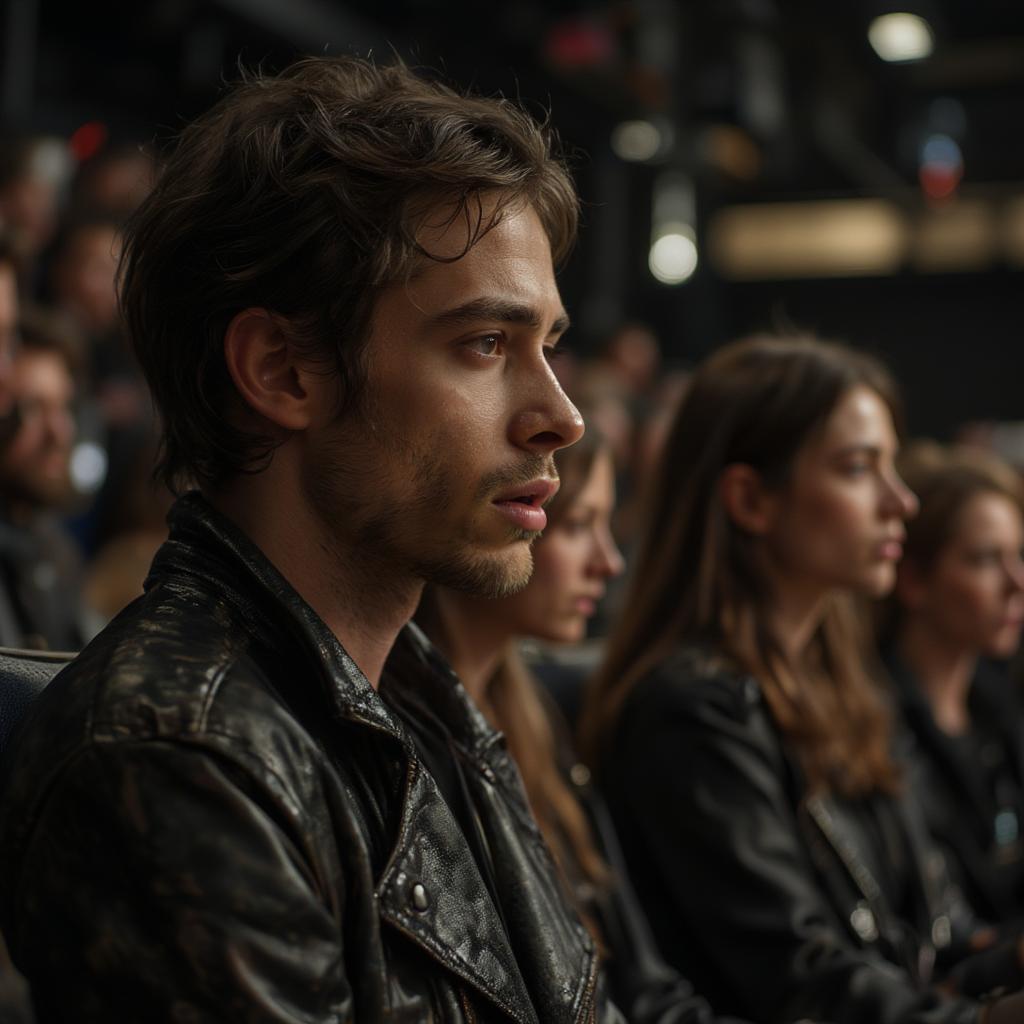Decoding Natchathiram Nagargirathu: A Deep Dive into Pa. Ranjith’s Bold Cinema

Navigating the cinematic universe of Pa. Ranjith’s Natchathiram Nagargirathu requires more than just a casual viewing; it demands a journey into the heart of its complex themes. This article aims to dissect and understand this powerful film, exploring its narrative, its socio-political commentary, and its unique place in contemporary Tamil cinema. We will unpack the layers, the controversies, and the brilliance that make Natchathiram Nagargirathu a landmark in its own right.
The Narrative Tapestry of Natchathiram Nagargirathu
At its core, Natchathiram Nagargirathu isn’t just a film; it’s a vibrant canvas of diverse perspectives on love, identity, and social justice. Pa. Ranjith masterfully crafts a story centered around a group of theater artists in Pondicherry, each grappling with their own personal battles and societal expectations. The narrative isn’t linear, but rather a series of interwoven character studies that shed light on the struggles of marginalized communities. Think of it as a beautifully chaotic mosaic, where each piece contributes to the larger, more profound picture. The film challenges our conventional understanding of relationships and societal norms, presenting a reality that’s both raw and thought-provoking.
Unpacking the Characters and Their Journeys
The characters in Natchathiram Nagargirathu are not mere caricatures; they are flawed, complex individuals mirroring the diversity of real life. Each character’s journey, whether it’s the struggles of a trans woman or the challenges faced by a Dalit man, resonates deeply with the audience, creating an immersive and emotional viewing experience. Rene, the lead character, is a symbol of questioning and pushing boundaries, while the other characters represent the multitude of challenges faced by marginalized communities in India. Their interactions form the bedrock of the film, providing a platform for discussing sensitive and often taboo topics. This film isn’t just about their stories; it’s about our stories reflected through their lens.
The Socio-Political Commentary: More than Just Entertainment
Natchathiram Nagargirathu doesn’t shy away from uncomfortable truths. It’s a powerful commentary on caste, gender, and identity in modern India. The film seamlessly integrates these social issues into the narrative, making it not just a story but a mirror reflecting the harsh realities of Indian society. The dialogues are sharp, the scenarios realistic, and the message is loud and clear: systemic inequalities must be addressed. The film challenges its audience to question their own biases and confront the prejudices that permeate society. It’s this ability to seamlessly blend entertainment with hard-hitting social commentary that makes Natchathiram Nagargirathu so impactful.
Caste, Gender, and Identity: The Intersectional Struggle
The beauty of Natchathiram Nagargirathu lies in its intersectional approach. It doesn’t treat caste, gender, or sexual identity as separate entities; it portrays them as interwoven threads in the fabric of social injustice. The film highlights how these issues compound one another, making life even more difficult for those who are already marginalized. Pa. Ranjith shows how the fight for equality isn’t a singular battle, but a multifaceted struggle that requires a holistic understanding of intersecting oppressions. This complexity is what makes the film so compelling and pertinent.
Pa. Ranjith’s Direction: A Bold Vision
Pa. Ranjith’s direction in Natchathiram Nagargirathu is nothing short of exceptional. He uses a unique storytelling technique, blending realism with theatrical elements. The dialogues are poetic, the visuals stunning, and the music a powerful narrative tool in itself. His ability to extract powerful performances from his cast, combined with his unflinching gaze at uncomfortable subjects, makes Natchathiram Nagargirathu a cinematic triumph. The film stands as a testament to his ability to craft stories that are not just thought-provoking but also deeply emotionally resonant.
Unique Cinematography and Visual Storytelling
The visual language of Natchathiram Nagargirathu is as compelling as its narrative. The cinematography is deliberately artistic, using shadows, colors, and framing to convey the emotions and power dynamics at play. The use of theatrical staging within the film itself blurs the lines between reality and performance, drawing the audience into the world of the characters. Every shot, every angle, has a purpose, and every visual choice adds depth to the film’s overall message.
“Ranjith’s use of extended dialogues and theatrical staging in Natchathiram Nagargirathu is a testament to his commitment to creating cinema that reflects lived experiences. It’s not just about telling a story; it’s about engaging in a crucial conversation with the audience,” states Dr. Anjali Sharma, a cultural studies scholar specializing in contemporary Indian cinema.
The Music and Soundscape: Amplifying the Message
The music in Natchathiram Nagargirathu isn’t just background noise; it’s an integral part of the storytelling. The songs are poignant, the background score evocative, and both contribute to the film’s emotional resonance. The use of traditional music alongside contemporary sounds mirrors the film’s themes of embracing both the past and the present. The sound design, often overlooked, plays a key role in amplifying the impact of each scene. Music adds an extra layer of depth and emotion, creating an immersive cinematic experience that lingers long after the credits roll.
Why Natchathiram Nagargirathu Matters
Natchathiram Nagargirathu is more than just a film; it’s a cultural phenomenon. It has sparked conversations, challenged norms, and pushed boundaries. It has ignited debates, and rightly so. It’s a film that demands to be watched, discussed, and understood. Its impact is undeniable, and its legacy will continue to influence Tamil cinema for years to come. In a world where marginalized voices are often silenced, Natchathiram Nagargirathu is a beacon of hope and a testament to the power of cinema to bring about social change.
Controversies and Critical Acclaim
No discussion of Natchathiram Nagargirathu is complete without acknowledging the controversies it has sparked. The film’s bold portrayal of sensitive issues has been both praised and criticized. However, regardless of the varying viewpoints, it’s undeniable that the film has forced audiences to confront uncomfortable realities, fostering a critical dialogue about crucial societal issues. Despite the controversies, the film has garnered significant critical acclaim, with many praising its artistic and socio-political merit, thereby cementing its place as a landmark in Tamil cinema.

Connecting with the Audience: The Emotional Impact
Beyond the social commentary and the technical brilliance, Natchathiram Nagargirathu connects with its audience on a deeply emotional level. The characters’ struggles are universal, and their resilience is inspiring. The film forces us to confront our own biases and prejudices, challenging us to be more empathetic and understanding. It’s a film that stays with you long after you’ve watched it, prompting reflection and contemplation. It doesn’t just tell a story; it evokes an emotional response, making it a powerful and unforgettable experience.
The Enduring Legacy of Natchathiram Nagargirathu
Natchathiram Nagargirathu has not only enriched Tamil cinema but has also set a new standard for socio-political filmmaking in India. It serves as a benchmark for future filmmakers aiming to create meaningful and impactful films that engage with pressing societal issues. This film is more than a work of art; it’s a social statement and a challenge to the status quo. It’s a call to action, encouraging us to be more critical, empathetic, and proactive in addressing the issues that plague our society.
“The beauty of Natchathiram Nagargirathu is its ability to encourage dialogue and introspection. It’s a film that demands not just to be watched, but to be debated and discussed. It represents a significant step forward in Indian cinema,” comments Prof. Ravi Kumar, an expert in South Asian Studies and social movements.
What Can We Learn from Natchathiram Nagargirathu?
Ultimately, Natchathiram Nagargirathu teaches us the importance of empathy, understanding, and inclusivity. It highlights the need to break down social barriers and question the status quo. It encourages us to celebrate diversity and respect individual identity. It’s a film that reminds us that the fight for equality is ongoing and requires active participation from everyone. It’s not just about watching the movie; it’s about learning from the lessons it teaches.
Conclusion: A Star in the Night Sky of Cinema
Natchathiram Nagargirathu stands as a beacon of bold cinema, pushing the boundaries of storytelling and sparking crucial conversations. It’s a film that will continue to be relevant for years to come, inspiring filmmakers and audiences alike. This film is a testament to the power of cinema as a tool for social change. Its legacy as a benchmark of socio-political relevance within Tamil and Indian cinema is firmly cemented. Natchathiram Nagargirathu is more than just a movie; it’s a movement.
FAQ about Natchathiram Nagargirathu
1. What is Natchathiram Nagargirathu primarily about?
The film primarily explores diverse perspectives on love, identity, and social justice through the lives of a group of theater artists. It delves into themes of caste, gender, and sexuality within contemporary Indian society.
2. Who directed Natchathiram Nagargirathu?
The film was directed by Pa. Ranjith, known for his socially relevant and bold storytelling style in Tamil cinema.
3. What makes Natchathiram Nagargirathu different from other Tamil films?
Natchathiram Nagargirathu is unique due to its unapologetic portrayal of marginalized communities and its intersectional approach to social issues. The film seamlessly integrates social commentary with artistic expression.
4. How does the film tackle the issue of caste?
The film tackles the issue of caste by portraying the lived experiences of Dalit characters, highlighting the systemic inequalities and discrimination they face, thus challenging traditional narratives in Tamil cinema.
5. Is the film solely about social issues, or is there a personal story involved?
While it prominently features social issues, the film also focuses on personal journeys and the emotional lives of its characters. It explores complex relationships and human emotions against the backdrop of social inequality.
6. What is the significance of the film’s title, Natchathiram Nagargirathu?
The title, which translates to “The Star is Moving,” is a metaphor for the shifting social landscape and the changing perspectives of individuals within that society, symbolizing progress and transformation.
7. What kind of music is featured in the film?
The film features a blend of traditional and contemporary music, enhancing its emotional and thematic depth. The soundtrack is an integral part of the storytelling process, not just a background addition.
8. How was Natchathiram Nagargirathu received by the critics and the audience?
The film received significant critical acclaim for its bold themes and artistic direction. However, it also sparked controversies, initiating important discussions about caste and gender in Indian society, indicating its impact on the audience as well.
9. What key message does Natchathiram Nagargirathu aim to convey?
The film conveys the importance of empathy, inclusivity, and actively challenging systemic inequalities. It calls for breaking down social barriers and respecting individual identity, ultimately pushing for a more equitable society.



